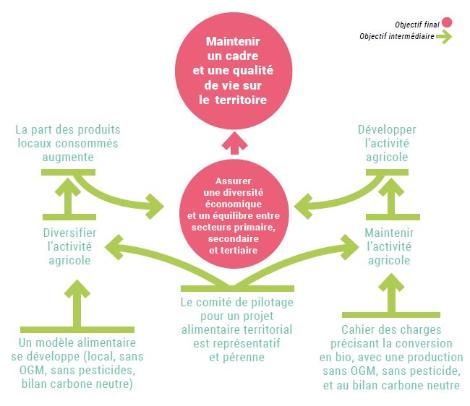Alimen’Terre
Supporting short circuits to all outlets, including collective catering
enero 2019
Fondation Daniel et Nina Carasso (FDNC)
Towards a Europe of territorial food systems?
This study is extracted from the analysis of twenty-two French and Spanish projects related to new food models, all highlighting different challenges.
In Spain, governance is being built, while French food systems are looking for solutions to change scale. But in both countries, accessibility remains the weak link. In the Valencian country, the Alimen’Terre project aims to boost the agricultural sector and quality production by working from upstream to downstream of existing local circuits. The path to change taken by this project is made up of two parts:
The first brings together the stages concerning the work carried out on demand, with consumers and the collective catering sector, and the second brings together the actions on agricultural production and the demand of the commercial catering sector.
Increasing the share of organic and local products in constant budget menus
Inspired by the Positive Eating Families challenge, the Pays de Vannes has deployed the Positive Eating Kitchen (Caap) challenge in four structures: a secondary school, a high school, a commune and a retirement home. In order to compensate for the extra cost of supplying organic and local products, several tools were used: the fight against food waste by offering 1, 2 or 3 pieces, the proposal of an alternative non-meat dish every two weeks and the purchase of organic vegetables at a low extra cost, in particular by using regional wholesalers.
Pays de Vannes, France
This area has around 150 farms that sell their products in short circuits. Of these, 70% have a quality approach, mainly based on the Organic Agriculture label. The Pays de Vannes is the leading Morbihan country in terms of surface areas converted to organic agriculture. But on 1,600 farms in total, the share of organic and local products remains marginal. Faced with this situation, the Pays de Vannes is launching the Alimen’Terre project to speed up conversions and restore the balance between a highly urbanised and touristic coastline and an inland territory in the midst of an agricultural crisis.
The Pays de Vannes public interest group (GIP) supports the actors on the ground, notably by enabling the pooling of resources and services. Its strategy, set out in its development charter in 2012, aims to promote complementarities and solidarity between rural and urban areas, as well as between the coast and the hinterland. Its board of directors is made up of intermunicipal authorities, elected representatives, State representatives and general councillors. A development council, led by a GIP employee, enables all citizens to participate in the development of the territory, as well as in the selection of subsidies.

A trajectory disrupted by the change of interlocutors
The territory of the Pays de Vannes public interest grouping extends over 60 municipalities, with 212,000 inhabitants, divided into three inter-municipalities: that of the Gulf of Morbihan-Vannes Agglomeration (GMVA), and the Arc Sud Bretagne and Pays de Questembert Communities of Communes. The territory comprises maritime, urban and rural areas. The trajectory of the food project has a jagged profile. The first two years are exciting with the setting up of governance, diagnostics and first actions. The next four years are marked by several breaks. The first is political: under the effect of a change in the majority, the facilitators note a lack of portage. The second break is observed at the level of the partners, due to a change of interlocutors.